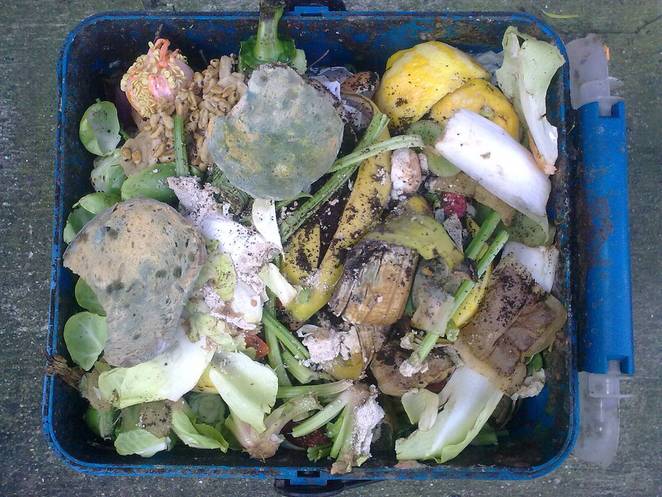Source: treehugger.com
Published: June 22, 2017

CC BY 2.0 Nick Saltmarsh
By Megan Treacy
A new technique for turning food waste into a source of energy uses a two step process that extracts all of the energy from the waste and does so quickly.
Researchers at Cornell University have discovered this new process to harness energy that is much more efficient than previous methods. When we typically talk about converting food waste into an energy source, it involves anaerobic digestion where bacteria slowly break down the organic matter and the resulting methane is captured and used as fuel.
The technique developed at Cornell first utilizes hydrothermal liquefaction to essentially pressure cook the food scraps to make a bio-oil that can be refined into a biofuel. The food waste that remains after removing the oil is a watery liquid.
This is fed to an anaerobic digester to convert the waste into methane over a few days. This two-step approach quickly produces a usable energy source that can be used to generate electricity or heat and doesn’t let any go to waste.
“If you used just anaerobic digestion, you would wait weeks to turn the food waste into energy,” said Roy Posmanik, a postdoctoral researcher at Cornell. “The aqueous product from hydrothermal processing is much better for bugs in anaerobic digestion than using the raw biomass directly. Combining hydrothermal processing and anaerobic digestion is more efficient and faster. We’re talking about minutes in hydrothermal liquefaction and a few days in an anaerobic digester.”
Currently, food waste makes up the largest share of what goes into U.S. landfills and one-third of the world’s food is lost or wasted. While finding ways to prevent food waste is incredibly important, having a way to keep the food from being waste in the end is also very valuable. Keeping the waste out of landfills and instead producing clean energy could go a long way to reducing our carbon footprint and reliance on fossil fuels.
The researchers have published their findings in the journal Bioresource Technology.
